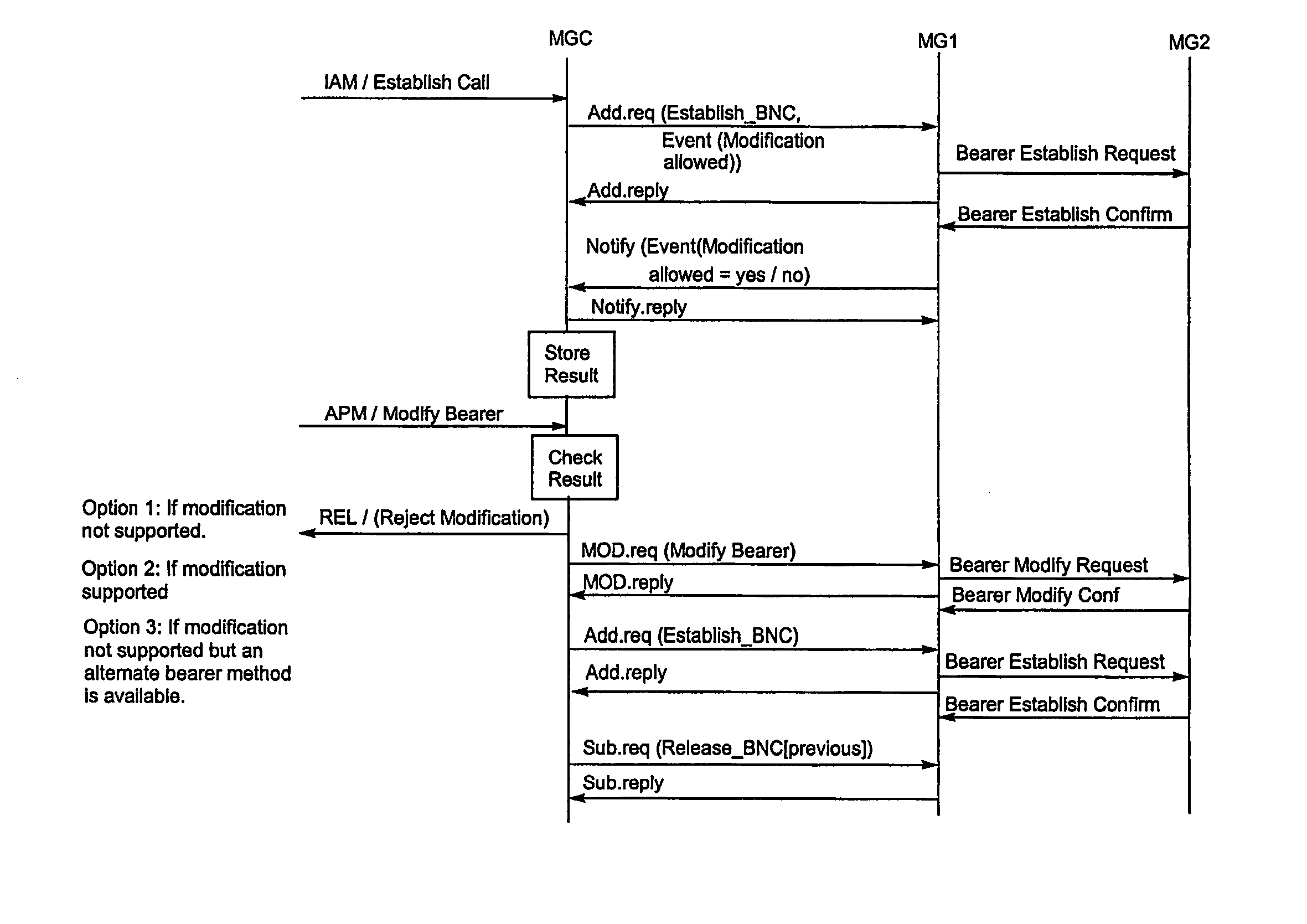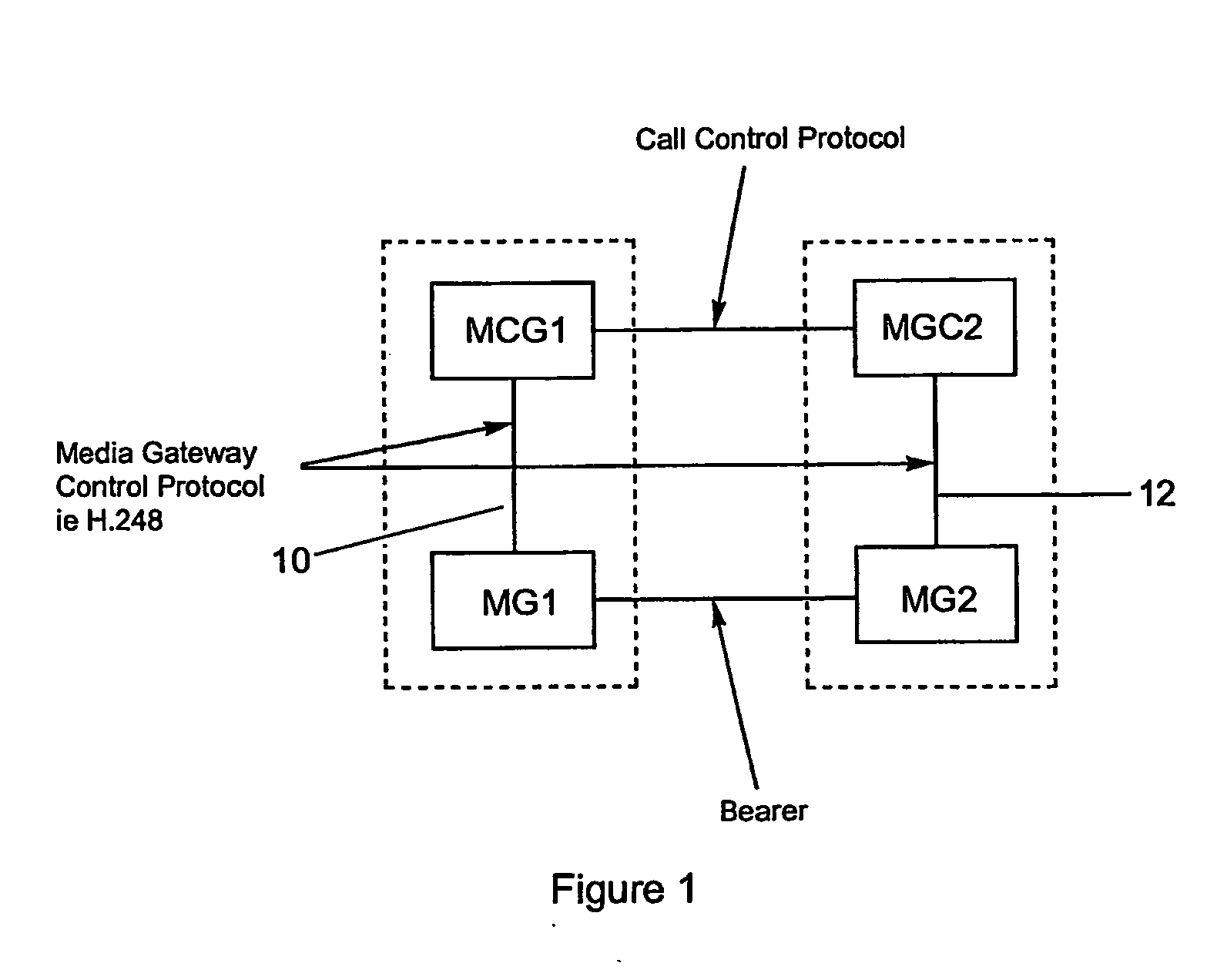Method and system of managing a call in a telecommunication system
- Summary
- Abstract
- Description
- Claims
- Application Information
AI Technical Summary
Benefits of technology
Problems solved by technology
Method used
Image
Examples
Embodiment Construction
[0043] With reference to FIG. 1, a diagrammatic illustration of a decomposed switching node that is separated into a media gateway controller and a media gateway is provided. In the instance of FIG. 1, there are two entities effecting call control functions namely, media gateway controllers MGC1 and MGC2, and two entities effecting bearer control functions namely, media gateways MG1 and MG2. Also illustrated in FIG. 1 is a bearer residing between the two media gateways MG1 and MG2 and links 10,12 between the respective media gateway controllers and their media gateways which provide for communication therebetween in accordance with a vertical control protocol such as the Media Gateway Control Protocol or H.248.
[0044] With reference to FIG. 2, the issuance of a request for a modification to bearer characteristics and the generation of an error message from a media gateway is schematically illustrated. In the instance of FIG. 2, the establishment, modification and release of bearers a...
PUM
 Login to View More
Login to View More Abstract
Description
Claims
Application Information
 Login to View More
Login to View More - R&D
- Intellectual Property
- Life Sciences
- Materials
- Tech Scout
- Unparalleled Data Quality
- Higher Quality Content
- 60% Fewer Hallucinations
Browse by: Latest US Patents, China's latest patents, Technical Efficacy Thesaurus, Application Domain, Technology Topic, Popular Technical Reports.
© 2025 PatSnap. All rights reserved.Legal|Privacy policy|Modern Slavery Act Transparency Statement|Sitemap|About US| Contact US: help@patsnap.com



